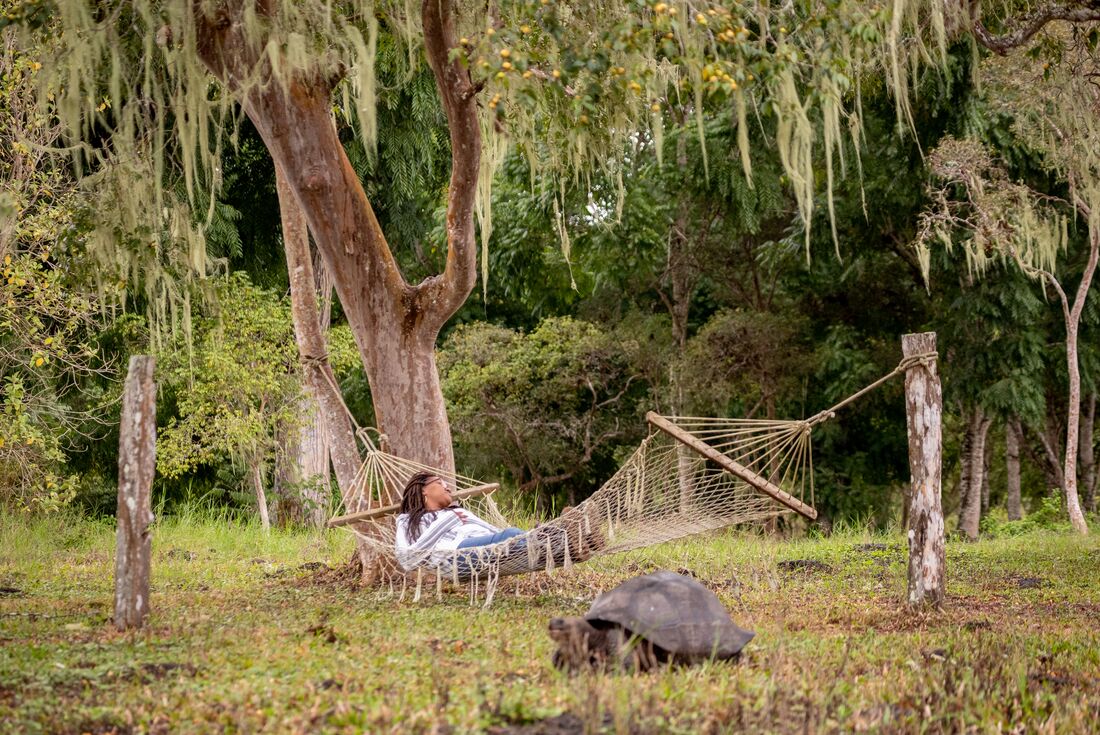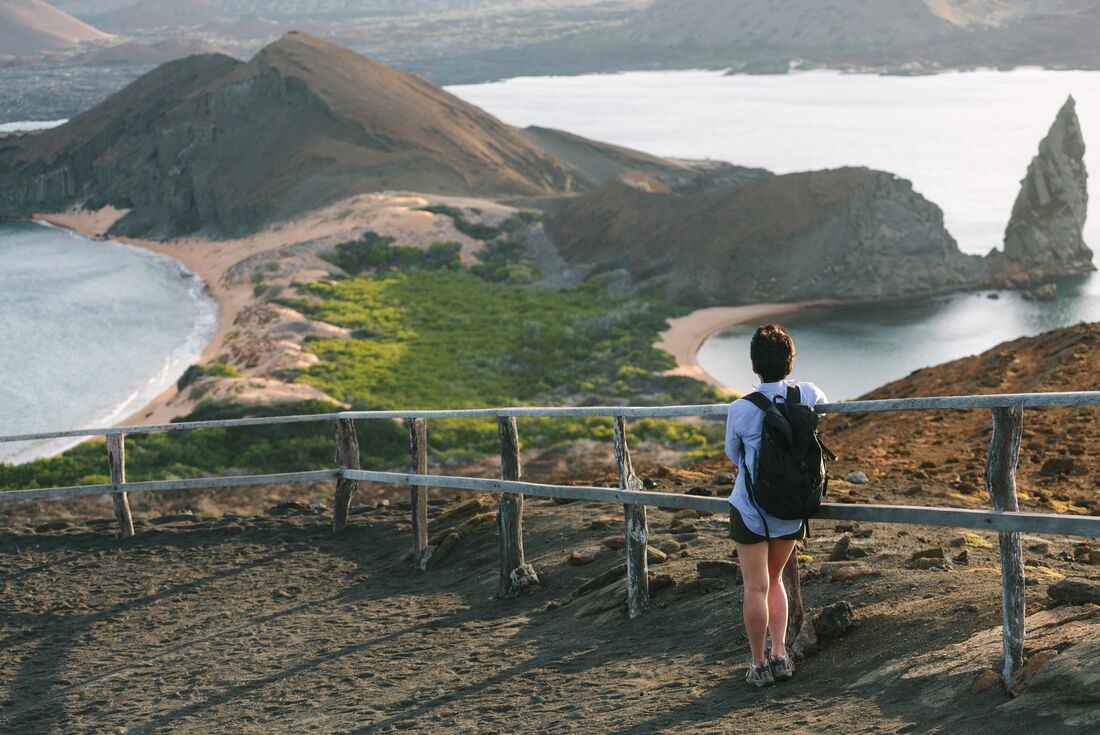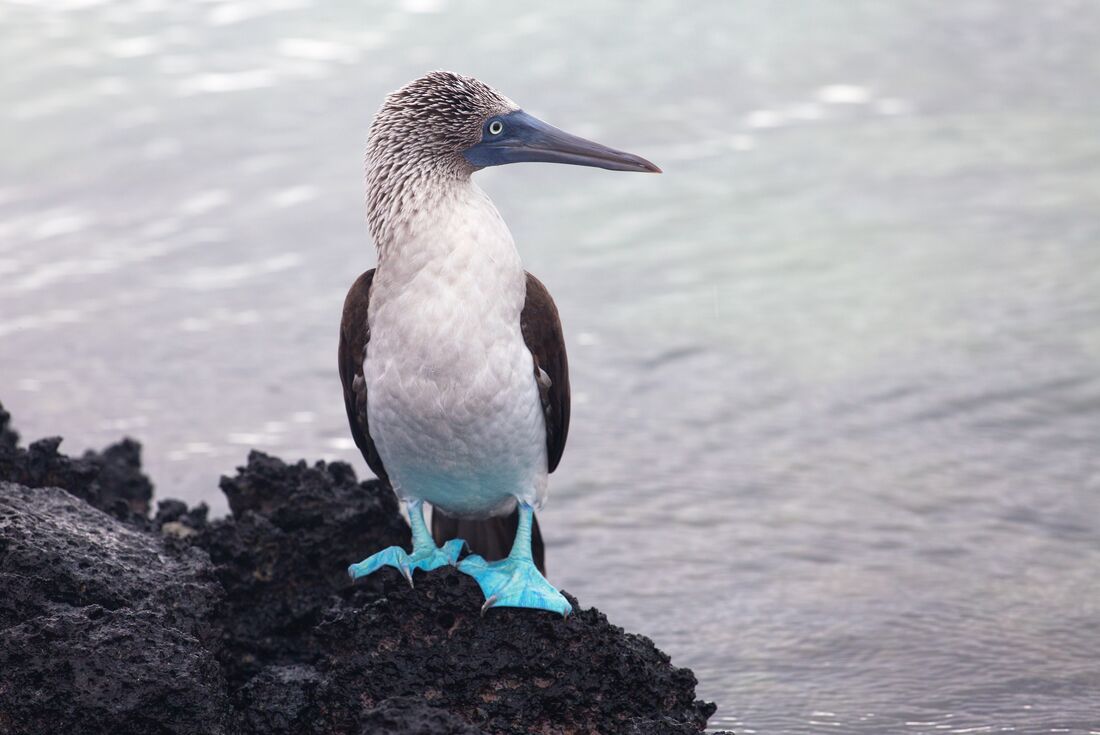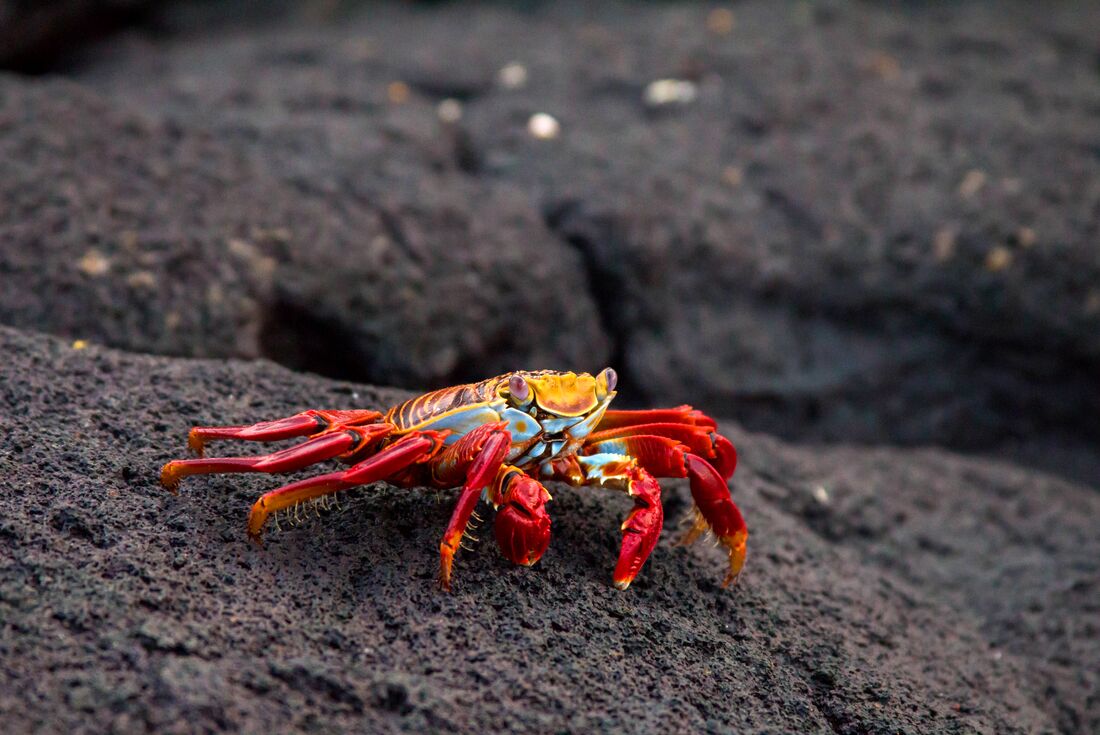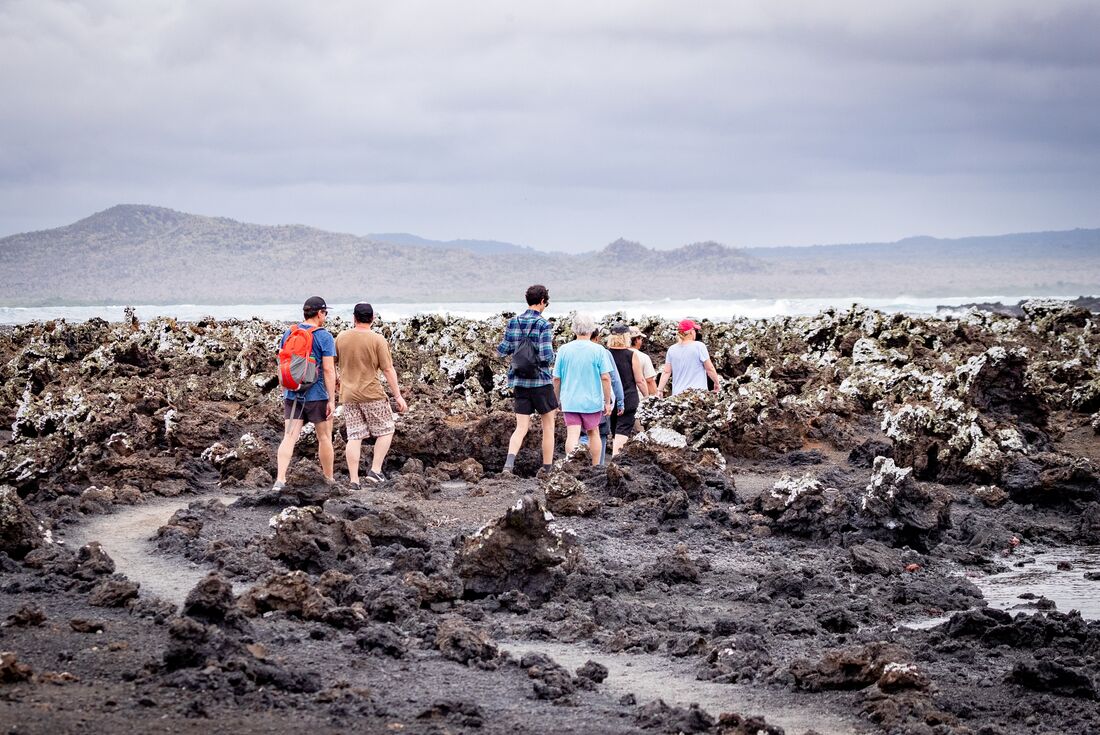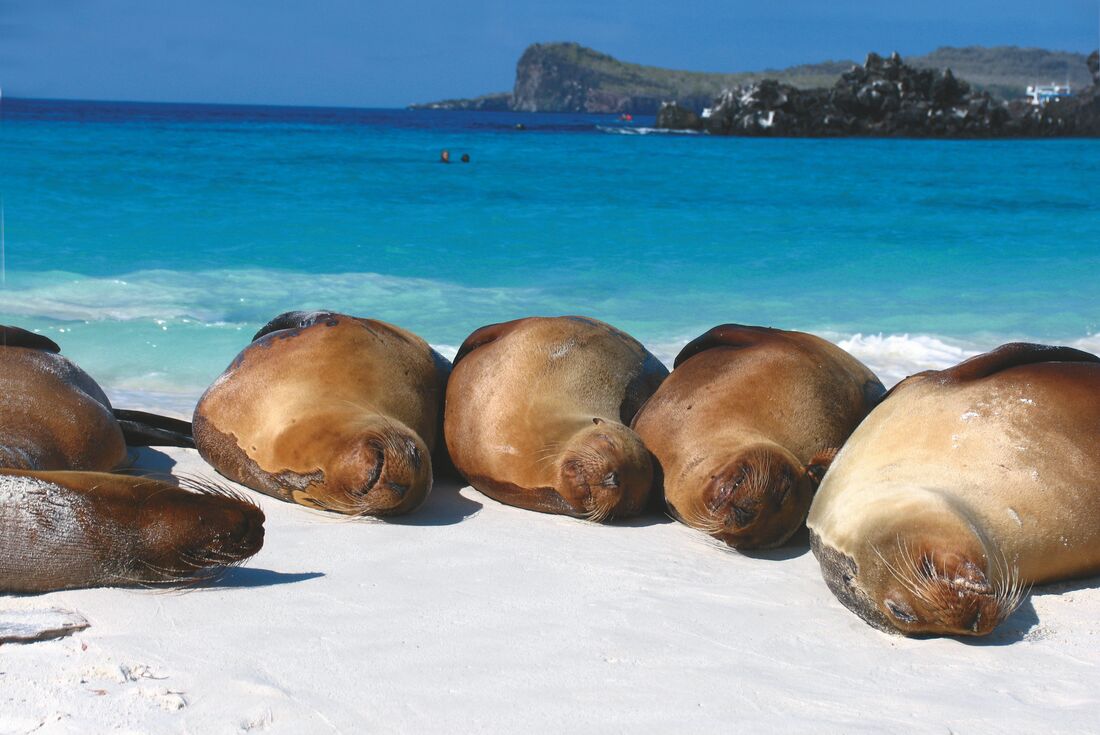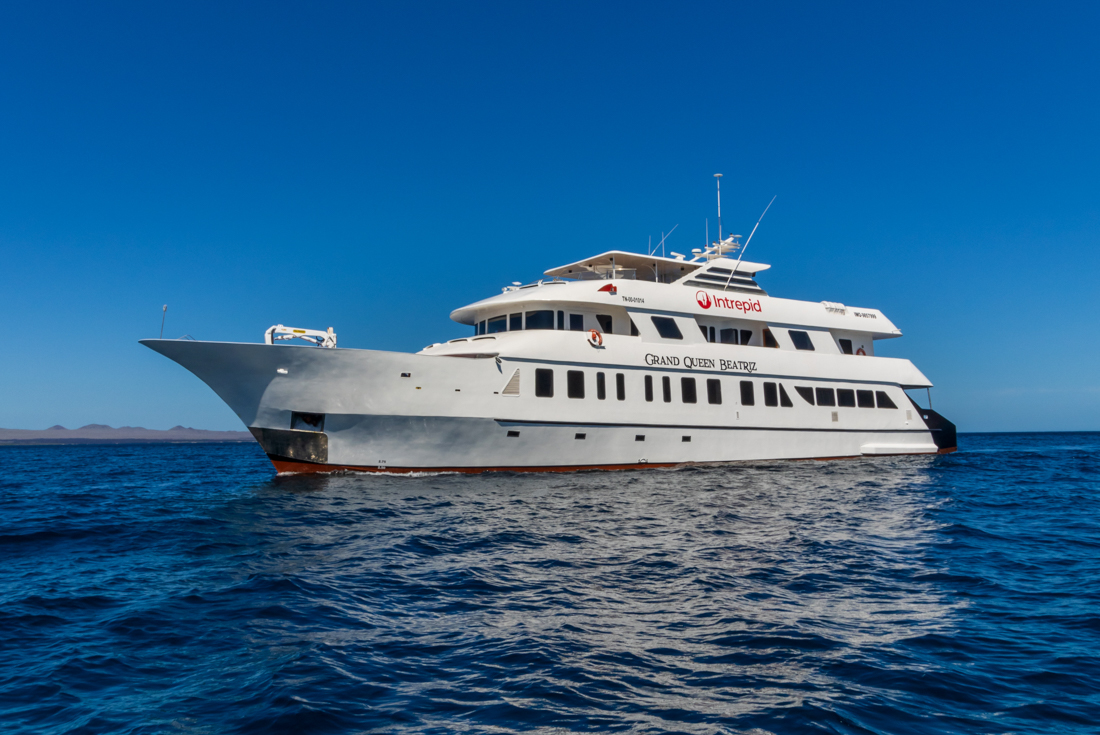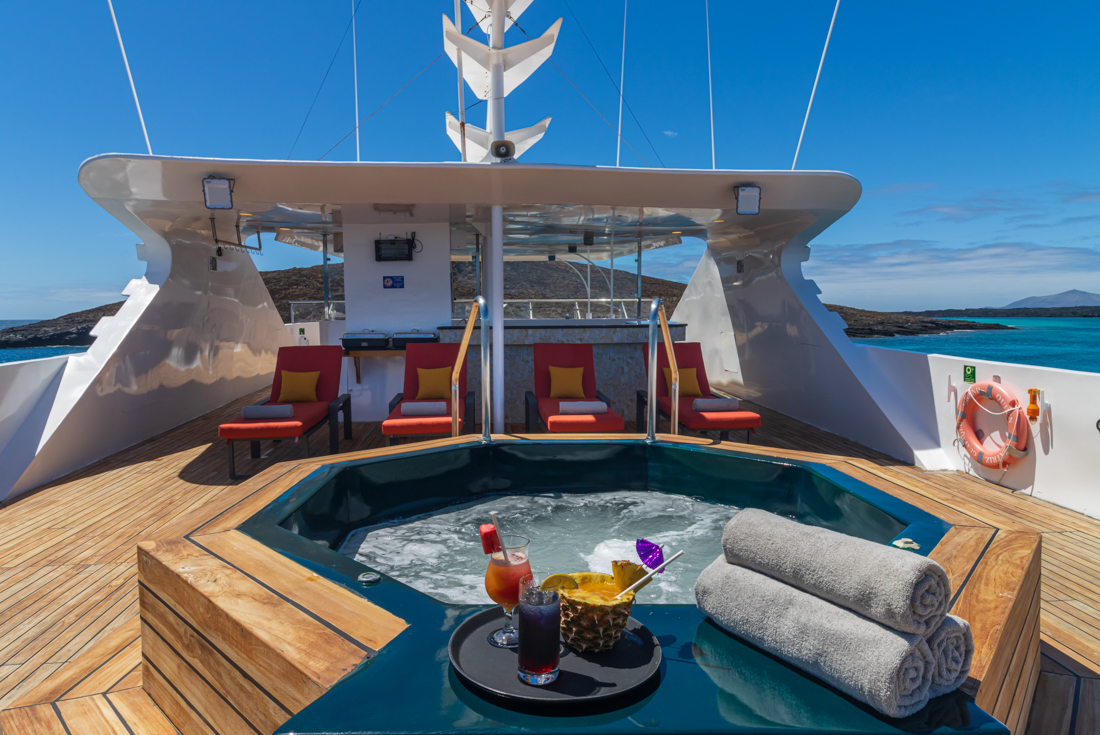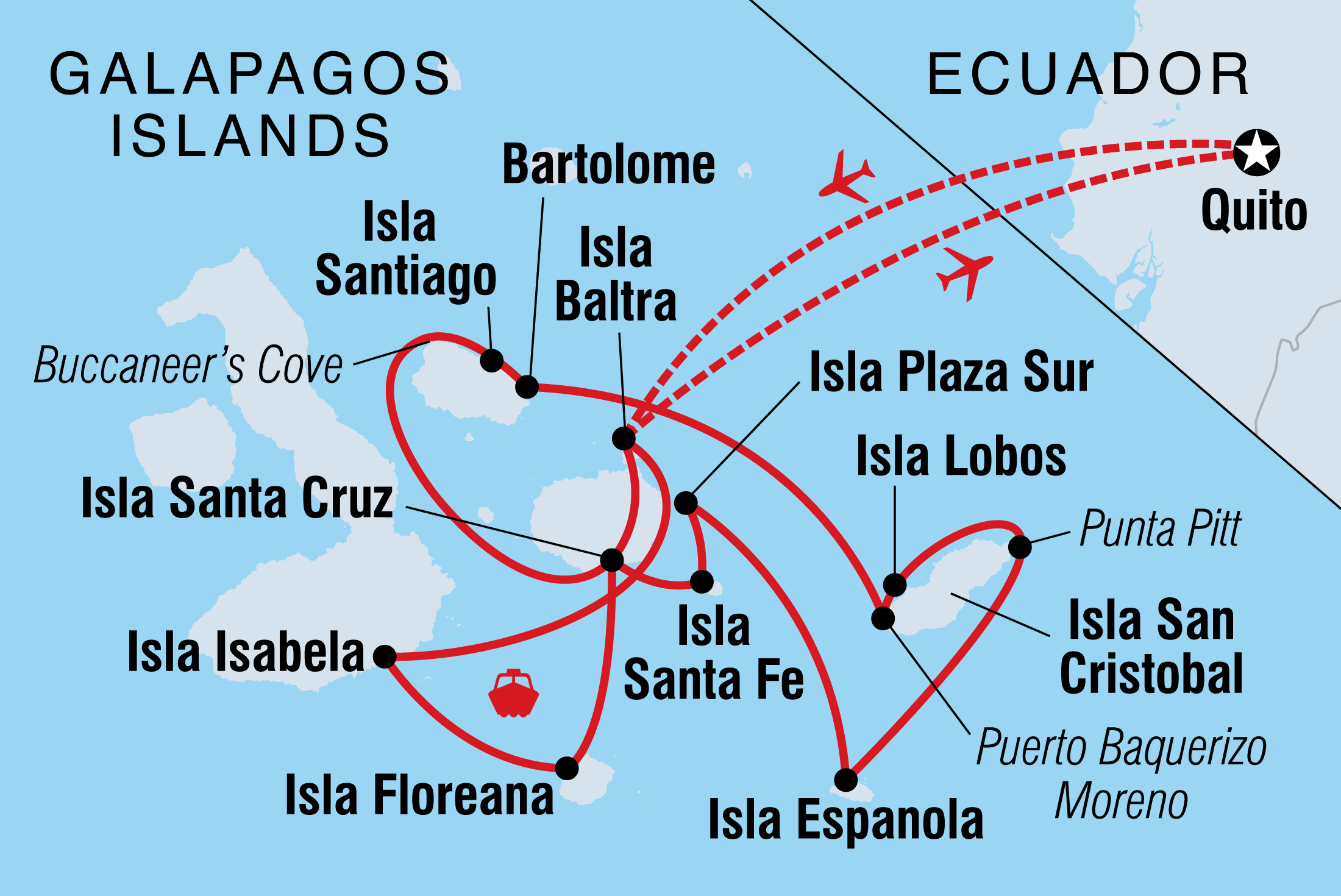SUMMARY
Embark on an immersive 13-day Adventure Cruise through the Galapagos Islands and experience the natural world in all its glory. Encounter diverse wildlife, from lumbering giant tortoises and sunbathing sea lions to scuttling crabs and blue-footed boobies. Wander through lava flow on Las Tintoreras, snorkel in the waters of protected cove Punta Carrion, and stick your toes in the olivine-crystal sands of Punta Cormorant. This itinerary allows plenty of time to absorb the spoils of this unique, wildlife-rich archipelago. Cruise into another world for the trip of a lifetime.
TOTAL DURATION : 13 Days
GROUP SIZE : MIN 1 MAX 16
TOUR ITINERARY AND DATES
START : Quito
END : Quito
COUNTRIES VISITED : Ecuador
Validity : 01 JAN 2022 To 31 DEC 2024
Day :1
Location : Quito
Welcome to Quito! On arrival at Mariscal Sucre International Airport, you will be met and transferred to your hotel. The remainder of the day will be at your leisure until a welcome meeting this evening. The meeting will be held at either 5 pm or 6 pm, please check with hotel reception or the reception notice board for the exact time and location. After your welcome meeting, head out with your local leader and fellow travellers for a welcome dinner at a local restaurant. Try some traditional flavours and get to know you group as you settle into the coming adventure. Quito sits at high altitude under the towering Pichincha volcano. It is a beautiful city, arguably one of the most beautiful in South America, and there is plenty to occupy you should you arrive with time to spare. The Old Town, for example, has many museums and churches to explore, including the ornate La Compania de Jesus.
Day :2
Location : Isla Baltra/Punta Carrion
Rise and shine for a very early airport transfer. The pick-up time can be as early as 4.30 am, which is necessary in order to guarantee timely arrival at the airport and make the most of your precious time in the Galapagos. Your leader will confirm the exact time of departure during the welcome meeting on Day 1, and a boxed breakfast will be provided on the 1-hour drive to the airport. Board the plane and make the approximately 3.5-hour flight to the islands, stopping en route to pick up passengers in Guayaquil. On arrival in the Galapagos you will be met in the arrivals hall and then transferred to your motor yacht, M/Y Grand Queen Beatriz, anchored a short distance away off Isla Baltra. Once on board you’ll be assigned your cabins, meet the crew members and have a welcome briefing and safety drill before getting to know your naturalist guide and fellow travellers over a delicious lunch. Your first stop in the afternoon will be Punta Carrion, located on the eastern side of the Itabaca channel that separates the islands of Baltra and Santa Cruz. This is a shallow and protected cove, ideal for your first snorkel and swim in the Galapagos! From the vantage point of your boat, wildlife is plentiful, so keep your eyes peeled for occasional sights of blue-footed boobies, Galapagos herons and great blue herons, while under the surface swim rays and white-tipped reef sharks. Tonight, enjoy a welcome cocktail and crew presentation on board. Estimated travel time/distance: Isla Baltra to Punta Carrion: 1.5 hours (10 nautical miles) Punta Carrion to Isla Isabela (Puerto Villamil): 9 hours (64 nautical miles)
Day :3
Location : Isla Isabela/Las Tintoreras/Giant Tortoise Breeding Centre
Today you will wake up on the south Coast of Isla Isabela, the largest island of the Galapagos Archipelago. Isabela was formed by five giant volcanic craters, all of which are still considered active. The island is in one of the youngest geological areas in the world, formed less than 1 million years ago. This southern coast has the largest area of beaches in the Galapagos. You will visit Las Tintoreras, where from the viewing walkway you can look down into this narrow channel to see a colony of white-tipped reef sharks swimming and sleeping, and the occasional playful sea lion among them! Blue-footed boobies, penguins, and crabs also make their home here. Enjoy a nice long walk on a gravel path through aa (pronounced ah-ah) lava flow and see plenty of marine iguanas. In the afternoon, take another leisurely walk through a coastal lagoon, where you might be able to catch sight of flamingos. The mangrove-lined path leads to Arnaldo Tupiza Giant Tortoise Breeding Center, where you'll observe giant tortoises at all stages of development. Here you can see the five sub-species of tortoises from Isla Isabela, some of which are bred in captivity. You will then have the choice of optional swimming at the beach or heading out for some shopping in Puerto Villamil. Estimated travel time/distance: Isla Isabela (Puerto Villamil) to Post Office Bay: 6 hours (40 nautical miles)
Day :4
Location : Isla Floreana/Post Office Bay/Devil's Crown/Punta Cormorant
The island of Floreana is a highlight of any Galapagos cruise, rich in natural wonders and wildlife even by the high standards set by the archipelago. Enjoy a panga ride around the loberia to observe marine iguanas, sea lions and crabs before taking a leisurely walk to Post Office Bay, where 18th-century whalers used a barrel as an unofficial mail drop. This custom continues to this day with visitors to the Galapagos – post one of your own or see if there are any you can deliver back home! You will also have the chance to go snorkelling with sea turtles. Today is also one of your finest opportunities to see pink flamingos and other water birds wading in the lagoons, including pintails and stilts. Just offshore, the Devil’s Crown is an eroded volcanic cone and a popular roosting site for seabirds such as boobies, pelicans and frigates. Red-billed tropicbirds can also be seen nesting in the rocky crevices. The centre of the cone is an outstanding snorkelling spot, perhaps the most remarkable in the entire archipelago, full of sea lions and colourful fish. Go ashore at Punta Cormorant where the sand is made up of fine olivine crystals, a glassy volcanic mineral, giving the beach an olive-green colour. It is the best place to see Galapagos sea lions, so get your camera ready. Estimated travel time/distance: Post Office Bay to Punta Cormorant: 0.5 hours (3 nautical miles) Punta Cormorant to Puerto Ayora: 4 hours (32 nautical miles)
Day :5
Location : Isla Santa Cruz/Charles Darwin Station/Santa Cruz Highlands
Today you will visit Santa Cruz, the second-largest island in the Galapagos. The small town of Puerto Ayora is the economic centre of the archipelago, and home to the Charles Darwin Research Station. As well as undertaking vital conservation work, the station also makes for interesting exploration and offers the best opportunities for close encounters with giant tortoises. You will also observe baby tortoises and land iguanas. Afterward you will head up into the highlands for a total change of scenery. Beginning at the coast you'll travel across Santa Cruz through the agricultural region and into the misty forests, with the journey taking about 45 mins. This is a lush humid zone containing miconia bushes, scalesia and inactive volcanic cones. Santa Cruz has more endemic plants than any of the other islands and you are likely to see Galapagos giant tortoises in their natural habitat, and perhaps even the bright red feathers of a vermillion flycatcher! Today there will be some passengers leaving the tour and some new passengers joining. Estimated travel time/distance: Puerto Ayora to the Highlands: 45 mins by bus Puerto Ayora to Santa Fe: 2 hours (16 nautical miles)
Day :6
Location : Isla Santa Fe/Isla Plaza Sur
Isla Santa Fe is home to many sea lions and these ones are very eager for swimming partners! It’s a lovely place to take a dip, offers a dense concentration of wildlife, and is a fantastic place to see many of the stars of the Galapagos in one relatively small area. Expect to see Galapagos hawks, land iguanas, a variety of finches, Galapagos mockingbirds, sea lions, marine turtles, frigatebirds, Galapagos doves and lava lizards. It’s a naturally beautiful island as well with one of the most attractive coves in the archipelago and the jade-green waters are ideal for snorkelling. A trail follows the coast into the opuntia forest, where you see Santa Fe's trees – the largest in the Galapagos. The island is also home to a unique sub-species of land iguana. Hiking towards the cliffs on Santa Fe will lead you to a forest of prickly pears. A member of the cactus family, their name comes from the pear-shaped fruit the plant produces. A small island, Plaza Sur is nonetheless a place of great beauty, where you will get close to sea lions and follow trails past one of the Galapagos’s largest land iguana populations, resting amid cacti and volcanic landscapes coloured bright red and green by sesuvium. The island’s rugged southern cliffs are an excellent place to spot tropicbirds and swallow-tailed gulls, as well as the 'Gentlemen’s Club’, a gathering of male sea lions either too young or too old to be beachmasters! Estimated travel time/distance: Isla Santa Fe to Isla Plaza Sur: 2 hours (16 nautical miles) Isla Plaza Sur to Isla Espanola (Punta Suarez): 7 hours (60 nautical miles)
Day :7
Location : Isla Espanola/Bahia Gardner/Punta Suarez
After an overnight sail, you will wake up on the island of Espanola – the southernmost island of the Galapagos and one of the most spectacular. Because of its remote location, this island has a large population of endemic fauna. It is the breeding site for nearly all of the 12,000 pairs of waved albatrosses on Earth, and home to colonies of blue-footed and Nazca boobies. Trails from the golden beaches, where sea lions bathe and marine iguanas make their way towards the water, will lead you right through the middle of booby colonies, and Galapagos doves and mockingbirds are also often seen. Pay a visit to Punta Suarez, one of the most attractive locations in the Galapagos and home to a large and varied wildlife population – a walk along its trails will take you to a cliff-top viewpoint, where you'll gain a magical panorama. Boobies line the rocky shoreline beneath you, while frigate birds may be seen overhead; nearby enormous male sea lions can be seen lounging and albatross use the cliffs as their ‘runway’, helped into the air by the southeast winds that blow across this part of the island. If you’re lucky, you’ll see the elaborate courtship rituals performed by albatross before the female chooses her lifelong mate! You will also visit the beautiful white sandy beaches at Bahia Gardner, which are great places for swimming and relaxing. The rocks off the coast provide excellent snorkelling opportunities, with reef sharks, turtles, sea lions and many species of tropical fish – including surgeon and angelfish – often seen. The small white-tipped reef sharks are also commonly spotted resting under the rocks. Estimated travel time/distance: Punta Suarez to Bahia Gardener: 1 hour (7 nautical miles) Bahia Gardener to Punta Pitt (Isla San Cristobal): 7 hours (50 nautical miles)
Day :8
Location : Isla San Cristobal/Leon Dormido/Isla Lobos/Punta Pitt
Make a morning visit to Punta Pitt on the eastern end of Isla San Cristobal. Walk to the top of the volcanic hill for expansive views of the sparsely vegetated area. A variety of seabirds nest here, including blue-footed boobies and frigates. You will then navigate close by Leon Dormido (Kicker Rock) the basalt remains of a crater in the middle of the sea, with the shape resembling a sleeping lion. The rock rises 150 meters above the surface and is divided into two parts by a narrow channel. Although there are no landing areas, you will circumnavigation the Rock where you will see tropic birds, marine iguanas in the water and many sea lions. Later, visit Isla Lobos, a tiny island off the coast of San Cristobal. This is the perfect time to witness sea lions as they play in the shallow waters. Blue-footed boobies, frigate birds and marine iguanas can also be seen. Estimated travel time/distance: Punta Pitt to Kicker Rock (Isla San Cristobal): 2.5 hours (27 nautical miles) Kicker Rock to Isla Lobos: 1 hour (7 nautical miles) Isla Lobos to Puerto Baquerizo (Isla San Cristobal): 1 hour (5 nautical miles)
Day :9
Location : Isla San Cristobal
Visit San Cristobal Interpretation Center in the morning. This information hub brings the history and geography of the archipelago to life, from its volcanic origins to the present day. The human history exhibit offers an insight into the discovery and colonisation of the Galapagos, and the reality of the problems the islands face today is also explored. Enjoy some free time for shopping before going on board for lunch and to meet the new travellers who will be joining you today. This afternoon you will travel into the interior of the island (approximately 45-minute bus ride) to visit the highlands site of Galapaguera of Cerro Colorado (Red Hill) where the national park has established a breeding program and information centre for tortoises. Here, you will be able to see giant tortoises and learn all about their origin, evolution and their threatened future. Today there will be some passengers leaving the tour and some new passengers joining you. Estimated travel time/distance: Puerto Baquerizo (Isla San Cristobal) to Bartolome: 8 hours (70 nautical miles)
Day :10
Location : Bartolome/Bahia Sullivan
Bartolome is one of the most spectacular volcanic landscapes in the Galapagos, full of parasitic spatter cones, lava flows, Galapagos penguins and lava lizards. It is a relatively new island in the archipelago and traces of its volcanic past can be seen everywhere across the amazing lunar-like landscape. The Pinnacle Rock is one of the most photographed sites in the Galapagos – an abrupt jag of rock protruding from the earth like a tooth, close to two golden bays that back onto each other. You can hike to the top of a once-active volcano here (360 wooden steps), and enjoy superb views across to Sullivan Bay, on nearby Santiago Island. If you’re in luck you might catch a glance of the Galapagos Hawk here. You also have the option to go snorkelling with plenty of tropical fish, starfish, white-tipped reef sharks, rays and, hopefully, penguins. On Santiago's eastern coast sits Bahia Sullivan, also known as James Island. Here you walk on Pahoe-Hoe lava, from an eruption that occurred in 1897, and witness the colonisation of plant species since the last eruption. Your guide will explain the geological history of the islands as you walk, and with any luck you’ll see marine iguanas, Sally Lightfoot crabs, sea lions, finches, turtles, sharks and penguins. Estimated travel time/distance: Bartolome to Isla Santiago (Bahia Sullivan): 0.5 hours (1 nautical mile) Isla Santiago (Bahia Sullivan) to Espumilla Beach: 3 hours (25 nautical miles)
Day :11
Location : Isla Santiago/Espumilla Beach/Buccaneer Cove/Puerto Egas
Today you will visit some wonderful places. Espumilla Beach, on the northern coast of Isla Santiago in James Bay, is one of the most idyllic locations in the Galapagos Islands and an important nesting site for marine turtles. With large waves, it is also often a favourite amongst beach lovers. Potentially you will see Galapagos hawks up close, ghost crabs, blue-footed boobies (often plunging for fish) and brown pelicans. The area is also well known for its palo santo forest and some extraordinary lava formations. You will also visit Caleta Bucanero (Buccaneer Cove), a natural monument of rocks caused by sea erosion. This cove was used by pirates to careen their ships. It is a place of local legends and stories! It is also where Darwin camped for nine days while making his study of the islands and their wildlife. If conditions are favourable, you can enjoy some further snorkelling. Puerto Egas is a black-sand beach located on the west side of James Bay and northwest of Santiago Island. South of the beach is Sugarloaf Volcano, which has deposits of volcanic tuff. This site is named Puerto Egas, after Hector Egas who last attempted to mine salt here. The walk along the beach offers hundreds of marine iguanas and Galapagos sea lions. You will also see amazing tidal pools formed from ancient lava flow and home to sponges, snails, hermit crabs, barnacles and fish. Snorkelling with the seals always offers the possibility of thrilling encounters. Estimated travel time/distance: Espumilla Beach to Buccaneer Cove: 0.5 hours (1 nautical mile) Buccaneer Cove to Puerto Egas: 0.5 hours (1 nautical mile) Puerto Egas to Puerto Ayora: 7 hours (60 nautical miles)
Day :12
Location : Isla Santa Cruz/Puerto Ayora
Flights to mainland Ecuador from the Galapagos Islands depart mid-morning, so an early start is necessary to make the most of today’s visit to the small town of Puerto Ayora is the economic centre of the archipelago, and home to the Charles Darwin Research Station. As well as undertaking vital conservation work, the station also makes for interesting exploration and offers the best opportunities for close encounters with giant tortoises. You may also see baby tortoises and land iguanas. This will be your final excursion before you head to the airport. Upon arrival at Mariscal Sucre International Airport, enjoy an included transfer to your hotel. Choose whether to join your fellow travellers for an optional dinner this evening. NOTE; this trip we visits Charles Darwin Research twice, you have the option to have a free morning on day 5.
Day :13
Location : Quito
There are no activities planned for today. If you plan on staying in Quito, why not book yourself an Urban Adventure tour that shows you a different side of Ecuador – a bustling city! A Legends and Culture tour will show you the secrets of the Old Town and stories of the city’s colonial streets, with plenty of food thrown in for good measure! Find out more at urbanadventures.com/destination/Quito-tours.
Reference : IT

